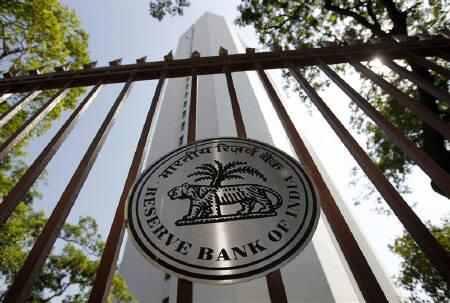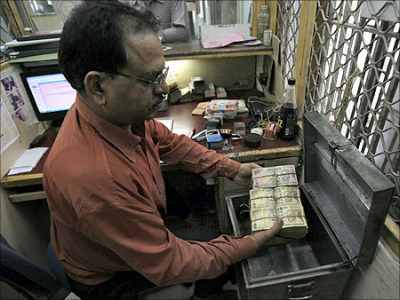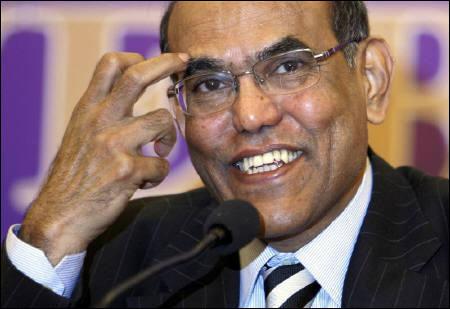Photographs: Danish Siddiqui/Reuters BS Reporter in Hyderabad
Despite growth and inflation balance shifting favourably, the Reserve Bank of India foresees inflationary pressures in the medium and long term.
In the present economic environment, there is little room for lowering interest rates, said RBI deputy governor Subir Gokarn.
"The central bank has started the process of reducing interest rates from last month.
. . .
Why RBI has little room to cut interest rates
Photographs: Mukesh Gupta/Reuters
"However, if you look at our inflation projections, in relation to what we consider as long-term or medium-term objective, there are inflation pressures.
"That, in a sense, limits the room that we have to reduce rates," Gokarn said on the sidelines of Ficci's national executive council meeting held in Hyderabad on Tuesday.
For the first time in three years, RBI had slashed the short-term lending rate by 0.5 per cent to eight per cent in April 2012.
In March, it reduced the cash reserve ratio by 75 basis points from 5.5 per cent to 4.75 per cent, thereby injecting around Rs 48,000 crore (Rs 480 billion) of primary liquidity into the banking system.
. . .
Why RBI has little room to cut interest rates
Photographs: Mukesh Gupta/Reuters
After reducing the CRR, the daily withdrawal and borrowings have come down to a little over Rs 1 lakh crore (Rs 1 trillion) from Rs 1.9 lakh crore (Rs 1.9 trillion), Gokarn said.
Roll-out of goods and services tax would help reduce inflation, said the deputy governor. "To have a balance between growth and inflation, tax reforms in the form of GST and investments in increasing food productivity are vital," he said.
Declining to comment on when the rupee situation is expected to come to an acceptable level, he said, "It is a fluid situation, both domestically and globally, and we need to respond to the market conditions as they emerge."
. . .
Why RBI has little room to cut interest rates
Image: RBI governor Duvvuri Subbarao.Photographs: Raj Patidar/Reuters
A widening current account deficit and a negative balance of payments amid rising imports are still worrying the central bank, which could limit RBI's ability to defend the local currency, Gokarn said, adding that the ultimate determinant on what the exchange rate is going to be will depend on how much capital comes in.
"Capital inflows have dwindled.
"The demand on current account remains very strong and so the pressure is still there. "You cannot be putting yourself in a situation of greater vulnerability by running into what is perceived by investors as a situation of inadequate capacity to meet external obligations.
. . .
Why RBI has little room to cut interest rates
Photographs: Stringer/Reuters
"And, that's high risk," he said.
Replying to a query on the bond purchase programme through open market operations, Gokarn said RBI had announced the programme as the tight cash situation did not seem to be short-lived.
"Over the last few days, we have seen borrowings touching Rs 1 lakh crore (Rs 1 trillion).
"The situation is still outside the comfort zone and hence (RBI) decided to go in for an OMO," he said, adding that pressure on food inflation was still strong in the country and the risk of inflation becoming resurgent was significant.
. . .
Why RBI has little room to cut interest rates
Photographs: Arko Datta/Reuters
Reuters adds
The central bank is conscious of the extreme volatility in the rupee exchange rate and has a variety of tools to guard against such fluctuations, Gokarn said.
Capital flows will be the 'ultimate determinant' for the currency, he said while reiterating that the widening current account deficit and a negative balance of payment were "stress points" for the economy.
Foreign institutional investors turned net sellers in both equity as well as debt in the month of April, although they were net buyers so far in the overall calendar year.
FIIs sold about $927 million of debt and equity in April.








article